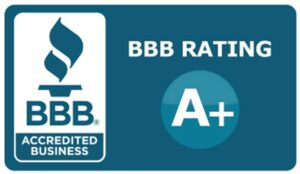Restless Leg Syndrome (RLS) is a condition that millions of Americans wrestle with daily, often without finding lasting relief. Characterized by an uncontrollable urge to move the legs, accompanied by sensations like tingling, crawling, or aching, RLS can turn a good night’s sleep into a distant dream. For those who’ve tried traditional treatments—dopamine agonists, muscle relaxants, or lifestyle tweaks—without success, the search for alternatives can feel endless. That’s where medical cannabis enters the conversation. As a writer who’s spent years digging into the science and stories behind cannabis, I’ve seen how this plant is quietly transforming lives, especially for those battling chronic conditions like RLS.
In recent years, patients and researchers alike have turned their attention to marijuana as a potential tool for managing RLS symptoms. While the scientific studies are still catching up, the anecdotal evidence is compelling—people report better sleep, less discomfort, and a renewed sense of control over their bodies. With cannabis laws evolving across the U.S., access to strains tailored for specific symptoms is growing, offering hope where conventional options fall short. This guide dives into the latest insights on using cannabis for RLS, spotlighting the best weed strains based on patient experiences and emerging research, and walking you through how to get started safely and effectively.
Understanding Restless Leg Syndrome and Cannabis
Restless Leg Syndrome, also known as Willis-Ekbom Disease, affects an estimated 7-10% of the U.S. population, according to the National Institute of Neurological Disorders and Stroke. It’s a neurological disorder that tends to worsen at night or during periods of rest, making sleep elusive and daily life exhausting. The exact cause isn’t fully understood, but experts point to a mix of genetic factors, dopamine imbalances in the brain, and sometimes iron deficiency as key players. Traditional treatments—like pramipexole or gabapentin—work for some, but others find the side effects intolerable or the relief temporary.
Cannabis offers a different approach. The plant’s active compounds, cannabinoids like THC (tetrahydrocannabinol) and CBD (cannabidiol), interact with the body’s endocannabinoid system—a network of receptors that regulates pain, mood, sleep, and movement. Think of it as a master switchboard that cannabis can tweak to ease discomfort and calm overactive nerves. For RLS, this could mean quieting the urge to move and soothing the strange sensations that keep sufferers awake. A 2020 study published in Sleep and Breathing found that 8 out of 12 patients with treatment-resistant RLS reported complete symptom relief after using cannabis, a promising hint at its potential.
Why Cannabis Works for RLS
The magic of cannabis lies in its versatility. THC, the compound responsible for marijuana’s psychoactive effects, has muscle-relaxing and sedative properties that can help RLS patients drift off to sleep. CBD, on the other hand, is non-psychoactive and excels at reducing inflammation, anxiety, and nerve-related discomfort—common companions of RLS. Together, these cannabinoids can tackle the condition from multiple angles: easing physical symptoms, improving sleep quality, and even lifting the emotional burden of chronic restlessness.
Patients often describe RLS as a maddening loop—discomfort leads to movement, which disrupts sleep, which heightens stress, which worsens symptoms. Cannabis seems to break that cycle. By boosting dopamine signaling (a key issue in RLS) and calming the nervous system, it offers a natural reset. While we don’t have large-scale clinical trials yet, smaller studies and countless firsthand accounts suggest it’s worth exploring, especially for those who’ve hit a wall with other options.
Top Weed Strains for Restless Leg Syndrome Relief
Choosing the right strain is critical—cannabis isn’t a one-size-fits-all solution. Strains vary in their cannabinoid and terpene profiles, which dictate their effects. Indica-dominant strains, known for relaxation, tend to shine for RLS, but some hybrids and CBD-rich options also make the cut. Based on patient feedback, online forums, and the latest trends as of April 2025, here are the standout strains for RLS relief:
Granddaddy Purple (Indica)
Granddaddy Purple, or GDP, is a heavy-hitting indica that’s a favorite among RLS sufferers. With THC levels often topping 20%, it delivers a deep, full-body relaxation that can quiet restless legs and usher in sleep. Its terpene profile—rich in myrcene—enhances its sedative punch, making it ideal for nighttime use. Users say it melts away tension and pain, leaving them blissfully still. If your RLS flares up at bedtime, GDP could be your go-to.
Charlotte’s Web (High-CBD Hybrid)
For those wary of THC’s psychoactive buzz, Charlotte’s Web offers a gentler path. This strain, bred for high CBD (around 17%) and minimal THC (under 0.3%), gained fame for helping epilepsy patients, but its benefits extend to RLS too. It soothes nerve discomfort and promotes calm without knocking you out, making it versatile for day or night use. Patients report fewer leg twitches and a clearer mind—perfect if RLS disrupts your focus as well as your sleep.
ACDC (High-CBD Hybrid)
Another CBD powerhouse, ACDC boasts a CBD-to-THC ratio of about 20:1, often hitting 14% CBD. Derived from Cannatonic, it’s prized for its ability to relax muscles and ease pain without clouding your head. RLS sufferers love its subtle, uplifting effect—it takes the edge off restlessness while keeping you functional. If you need relief during the day or prefer a low-THC option, ACDC is a solid pick.
Afghan Kush (Indica)
Afghan Kush is an old-school indica with a reputation for long-lasting relief. Its high THC content (around 17-20%) and earthy, piney terpenes like pinene make it a muscle-relaxing marvel. Users say it locks their legs into a state of calm, often lasting hours—crucial for those whose RLS persists through the night. It’s potent, so start low if you’re new to cannabis.
Stephen Hawking Kush (Indica-Dominant Hybrid)
Named after the brilliant physicist, this strain blends indica relaxation with a 5:1 CBD-to-THC ratio. It’s a mellow choice that eases pain and tension while keeping the mind clear enough for light evening activities. RLS patients appreciate its balanced approach—enough sedation to quiet the legs, but not so much that you’re glued to the couch. It’s a great middle ground for beginners or those sensitive to THC.
How to Use Cannabis for RLS
Once you’ve picked a strain, the next step is figuring out how to use it. Cannabis comes in many forms—flower for smoking or vaping, edibles, tinctures, oils, and topicals—each with its own onset time and duration. For RLS, timing matters. If symptoms hit hardest at night, fast-acting methods like vaping or smoking can provide near-instant relief, kicking in within minutes and lasting 1-3 hours. Inhaling Granddaddy Purple or Afghan Kush right before bed, for instance, could settle your legs just as you’re winding down.
For longer-lasting effects, edibles or tinctures are better bets. They take 30-60 minutes to start working but can keep symptoms at bay for 4-6 hours—ideal if your RLS wakes you up repeatedly. A low-dose edible of Stephen Hawking Kush might carry you through the night. Topicals, like CBD creams, are less common for RLS but can target localized discomfort if your legs feel achy or tense. Experimentation is key; start with a small dose (5-10 mg THC or 10-20 mg CBD) and adjust based on how your body responds.
Getting Started with Medical Marijuana
If you’re new to cannabis, the legal landscape can feel daunting, but it’s more accessible than ever in 2025. As of now, 38 states and Washington, D.C., have legalized medical marijuana, with RLS often qualifying under chronic pain or neurological disorder categories. I always recommend going for a Medical Marijuana Card to ensure safe, regulated access. Companies like Kif Doctors make it simple—through their service, Same Day Medical Marijuana Card Online - Kif Doctors, you can apply, get approved, and access relief in minutes. Their straightforward process connects you with licensed physicians who understand conditions like RLS, helping you navigate strain selection and dosing with confidence.
Once approved, visit a dispensary or order online from a licensed provider. Budtenders can guide you toward strains like those listed above, often with lab-tested potency details. Keep a journal of what you try—dose, method, strain, and effect—to fine-tune your routine. And always consult your doctor first, especially if you’re on medications like dopamine agonists, as cannabis can interact with certain drugs.
Risks and Considerations
Cannabis isn’t without its caveats. THC can cause side effects like dizziness, dry mouth, or anxiety, particularly at high doses. Long-term use might lead to tolerance, meaning you’ll need more to get the same relief—a concern for chronic conditions like RLS. CBD is gentler but can still upset your stomach or clash with medications. There’s also the legal angle: while medical use is widespread, federal law still classifies marijuana as a Schedule I substance, so travel with caution.
For RLS specifically, some worry that cannabis might mask symptoms without addressing root causes like iron deficiency. That’s why it’s smart to pair it with a holistic plan—check your iron levels, stretch daily, and cut caffeine if it triggers your symptoms. Cannabis can be a powerful ally, but it’s not a cure-all.
The Future of Cannabis and RLS Research
As of April 2025, the research on cannabis for RLS is promising but limited. Small studies—like the 2020 Sleep and Breathing report—show real potential, yet we need larger, controlled trials to nail down dosing, strain efficacy, and long-term outcomes. The National Institutes of Health and private groups are ramping up funding for cannabinoid studies, so expect more clarity in the next few years. For now, patient experiences are driving the conversation, and they’re hard to ignore—thousands are finding relief where pills failed.
Frequently Asked Questions
Can cannabis cure Restless Leg Syndrome?
No, there’s no evidence that cannabis cures RLS. It can relieve symptoms like discomfort and sleeplessness, but it doesn’t fix underlying causes like dopamine dysfunction or genetics. Think of it as a management tool, not a solution.
What’s the best time to use cannabis for RLS?
It depends on your symptoms. If they peak at night, use a fast-acting method like vaping 15-30 minutes before bed. For all-day relief, try a longer-lasting option like edibles in the evening or a CBD tincture during the day.
Will CBD alone help my RLS?
Maybe. CBD can ease discomfort and promote relaxation, but some patients find THC’s sedative effects more effective for severe RLS. A combo of both—found in strains like ACDC—might offer the best of both worlds.
Is cannabis safe with my RLS medications?
It varies. Cannabis can interact with drugs like pramipexole or sedatives, potentially amplifying drowsiness or altering effects. Check with your doctor to avoid surprises.
How do I know if a strain is working?
Track your symptoms—less leg movement, better sleep, reduced discomfort—are good signs. If you feel no change after a week of consistent use, tweak the strain, dose, or method.
Conclusion
Restless Leg Syndrome doesn’t have to dictate your life. While it’s a stubborn condition, cannabis offers a fresh avenue for relief, backed by growing patient success and early science. Strains like Granddaddy Purple, Charlotte’s Web, and Afghan Kush stand out for their ability to calm restless legs and restore sleep, giving you a chance to reclaim your nights. Whether you’re drawn to THC’s sedative power or CBD’s gentle touch, the key is starting slow, staying informed, and working with professionals—like those at Kif Doctors—to find what fits you.
The journey to relief is personal, and cannabis might just be the missing piece. With laws loosening and research accelerating, 2025 could mark a turning point for RLS sufferers ready to explore this natural option. So, take a deep breath, talk to your doctor, and consider giving it a try—your legs might thank you.
 Since 2021, Kif offers a streamlined platform to get a medical marijuana card online. We have served more than 45K patients across the United States. Sign Up Now to get the right to use medical cannabis for your health condition without any delay.
Since 2021, Kif offers a streamlined platform to get a medical marijuana card online. We have served more than 45K patients across the United States. Sign Up Now to get the right to use medical cannabis for your health condition without any delay.

























